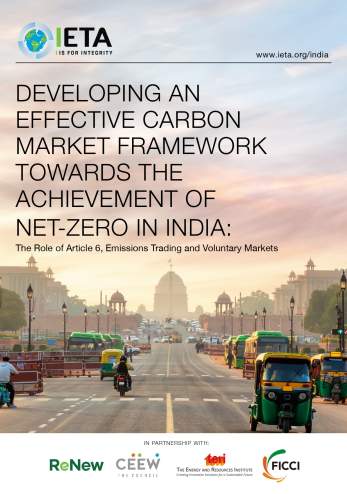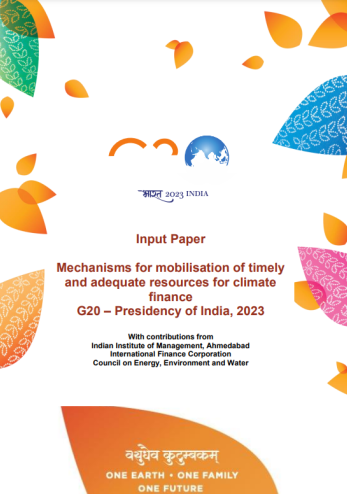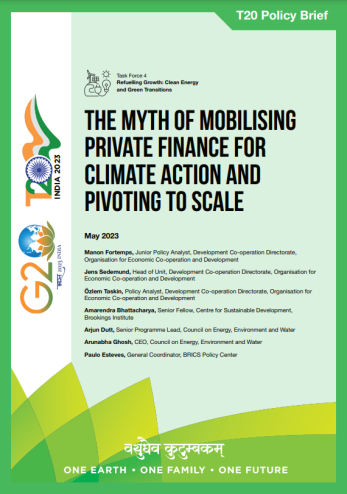Report
Clean Energy Investment Trends 2019
Evolving Risk Perceptions for Grid-Connected Renewable Power Projects in India
Arjun Dutt, Lucila Arboleya, Barath Mahadevan
July 2019 | Sustainable Finance
Suggested Citation: Dutt, Arjun, Lucila Arboleya, and Barath Mahadevan. 2019. Clean Energy Investment Trends: Evolving Risk Perceptions for India’s Grid-Connected Renewable Energy Projects. New Delhi; Paris: Council on Energy, Environment and Water; International Energy Agency.
Overview
This report analyses the risk perceptions of debt financiers towards solar photovoltaic (PV) and wind projects from 2014 to 2018. It also examines recent developments impacting the pace of capacity addition in India. Part of a series of trends reports being undertaken by the CEEW Centre for Energy Finance (CEF) in collaboration with the International Energy Agency (IEA), this study follows a 2018 report on the evolving investment landscape for grid-connected renewable energy (RE) in India.
Further, it includes an analysis of thermal power projects in order to assess the standing of renewables and thermal assets. The study also takes stock of the impact of a recent policy measure – the imposition of safeguard duties on solar PV cell and module imports – on the pace of project awards and the challenges facing the solar park model.
Key Findings
- The reduced risk perception of debt financiers funding solar photovoltaic (PV) and wind projects in India has improved investments in renewables.
- A maturing market along with reduced risk perceptions and enhanced bankability for renewables has contributed to improved availability and pricing of project debt finance over time, facilitating lower cost investment. Interest rate spreads for both wind and solar PV declined between 75 to 125 basis points, indicating declining risk perceptions between 2014 and 2018. Loan tenures increased in the same period as lenders became more comfortable in extending longer-term loans.
- In 2018, the top 10 firms accounted for over 80 per cent of the sanctioned projects in both solar PV and wind energy markets in India. However, there has been a notable change in top players year-on-year, indicated by the churn rate. There were signs of increased consolidation in the wind sector in 2018 with the churn rate dropping to 50 per cent from 90 per cent in 2017. The churn rate in the solar sector remained at 60 per cent from 2017 to 2018.
- The capital structure for thermal projects was not comprehensive enough for a year-to-year comparison with solar PV and wind. For thermal projects developed by integrated state government–owned utilities, degrees of project debt leverage are higher than those for solar PV and wind investments. Loan tenures are longer than those available to other categories of thermal developers.
- The weak availability of long-term, fixed-rate debt remains a constraint for all power generation investments. This also raises uncertainty over future financing costs for new plants and the refinancing of existing ones.
- The imposition of safeguard duty on solar PV cell and module imports has led to an increase in tariffs at renewable energy auctions relative to 2017, resulting in the cancellation of 5GW of solar projects awarded in 2018.
- Challenges in land acquisition and setting up transmission infrastructure have hampered solar park development. The share of solar parks in overall solar capacity awarded declined from 54 per cent in 2017 to 24 per cent in 2018. However, the absolute level of solar park capacity awarded remained unchanged over two years.
Investments in the renewable power market doubled over the last five years. At nearly USD 20 billion in 2018, they surpassed capital expenditure in the thermal power sector.






